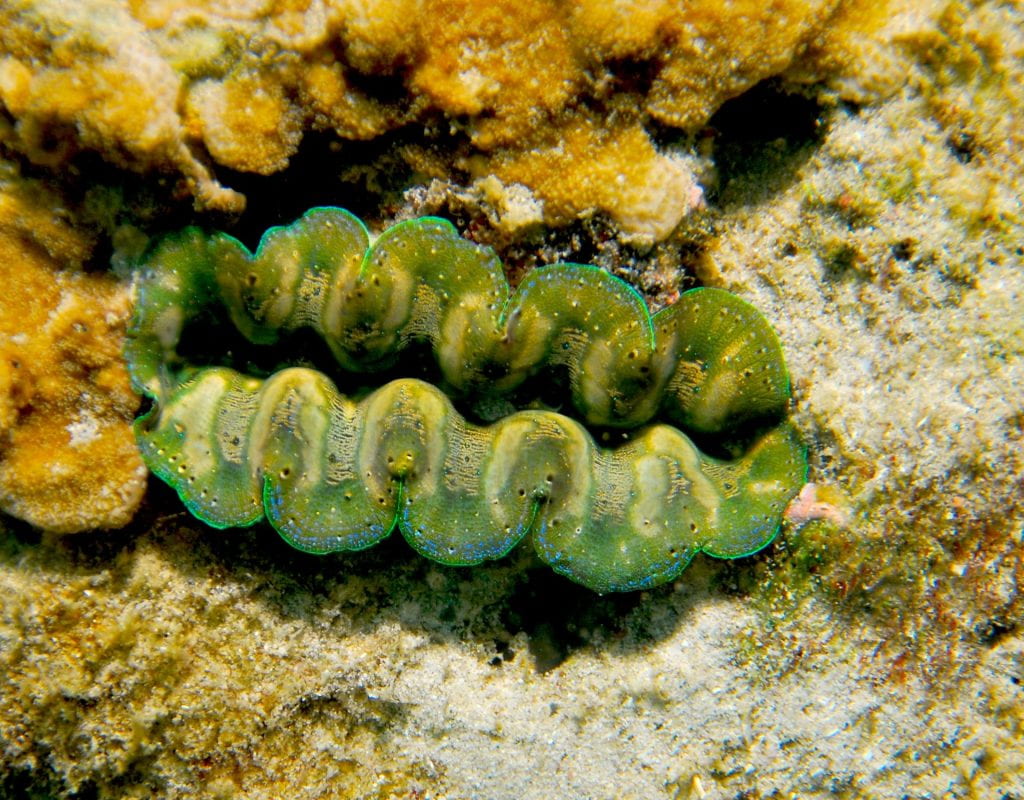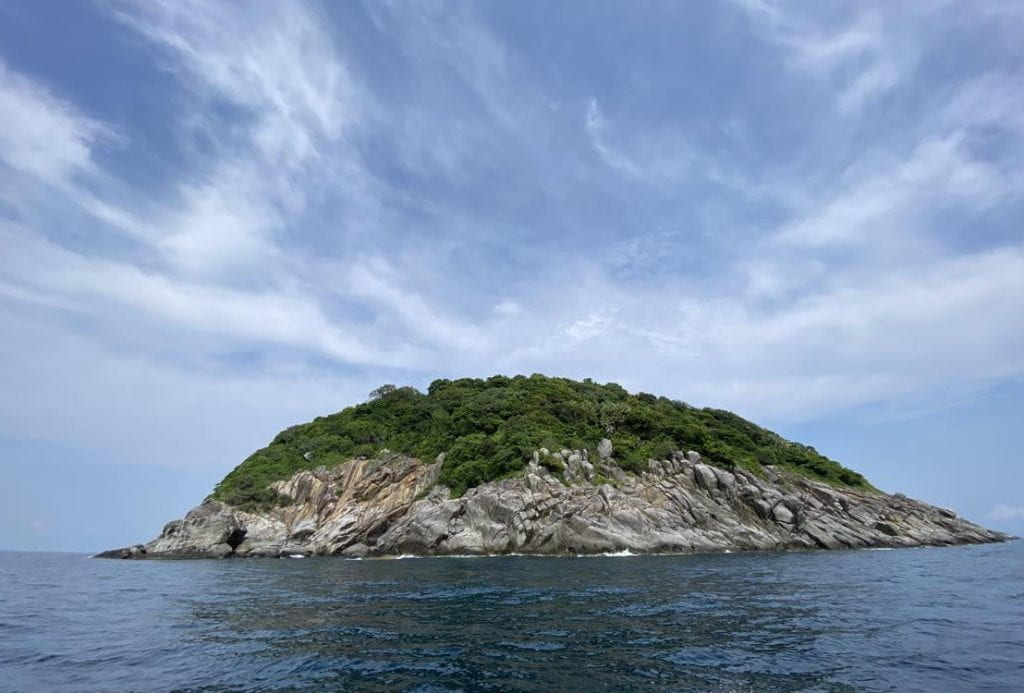Have you ever wondered why certain species of plants or animals are found in certain places but not others? That’s what biologists like Ain ponder about. She is especially interested in figuring out why crocus clams (Tridacna crocea) are found around Johor and Pahang islands but have not been seen around Terengganu offshore islands.

The Crocea clams, also known as crocus or saffron-colored clams, are the smallest of the giant clam family and are usually found embedded in corals. They are usually found in protected shallow back reef, lagoonal, and reef flat habitats. Like many sea creatures, the clam hosts zooxanthellae, a symbiotic dinoflagellate that gives the clam its brilliant colors and provides much of its food source. It’s no surprise that these beautiful clams are a favorite among advanced aquarium hobbyists. The smallness of the crocea clams makes them great marine tank mates but they do demand delicate care and pristine water quality. Fortunately, despite their popularity, the clams are currently not endangered and can be raised in captivity.

The other two giant clam species, the Fluted giant clam (Tridacna squamosa) and the Maxima clam (Tridacna maxima) can be found throughout the islands off the east coast of Peninsular Malaysia, from Terengganu to the Johor island groups.


See Singapore Biodiversity Online for a detailed comparison of the three Tridacna species.
Clams in the Tridacna genus are protected by international and federal laws as they are vulnerable to overexploitation by the aquarium trade and overconsumption (see CITES report for Crocea, Maxima, and Fluted giant clam) Fluted giant clam.
Could eDNA help find the Crocea clam?
eDNA is increasingly recognized as a sensitive and reliable tool for assessing biodiversity as well as detecting cryptic and rare species. Some researchers even propose that eDNA could be an alternative to conventional field surveys, citing higher operational costs, lack of taxonomic expertise, and dependence on good weather for surveys. eDNA could also be used in tandem with field surveys, allowing researchers to survey non-invasively across a wider area in a cost-effective manner before zooming into a chosen site for more in-depth studies. Of course, the eventual approach chosen by an investigator depends highly on the questions being asked.
Ain and her research officer Ruby were at Cornell in May 2023 to train on eDNA as part of the Commons Biodiversity Project initiative. The Commons Biodiversity Project is a special project housed within the Cheong Lab. The two researchers from Akuatrop, Universiti Malaysia Terengganu (UMT) are no strangers to molecular biology in their work on aquaculture and biodiversity conservation. Genetic analysis can be a powerful complementary tool to taxonomic approaches in species identification. For example, Ain’s research group used DNA barcoding to discern between T. crocea and T. maxima. In the juvenile stages, these two species can be easily confused as they share many similar physical characteristics, even though genetically, T. crocea and T. squamosa are more closely related.

Ain and Ruby practiced the eDNA protocol on a freshwater invertebrate, the invasive Rusty crayfish (Faxonius rusticus). They sampled water from Fall Creek where the presence of the crayfish has been visually confirmed as well as other sites throughout the Cayuga Lake watershed (learn more at our Rusty crayfish eDNA page).
Several months after the training, they adapted the eDNA protocol for Giant clams at several ongoing sampling sites around Bidong Island, UMT’s marine research station. Starting out with a sampling site with the known presence of the target species provides confidence in the sampling methodology and the sensitivity of the primers used in the quantitative PCR (qPCR) assays. Ain and Ruby will continue optimizing the protocol with the intention of sampling new areas for the presence of the Crocea clam.

